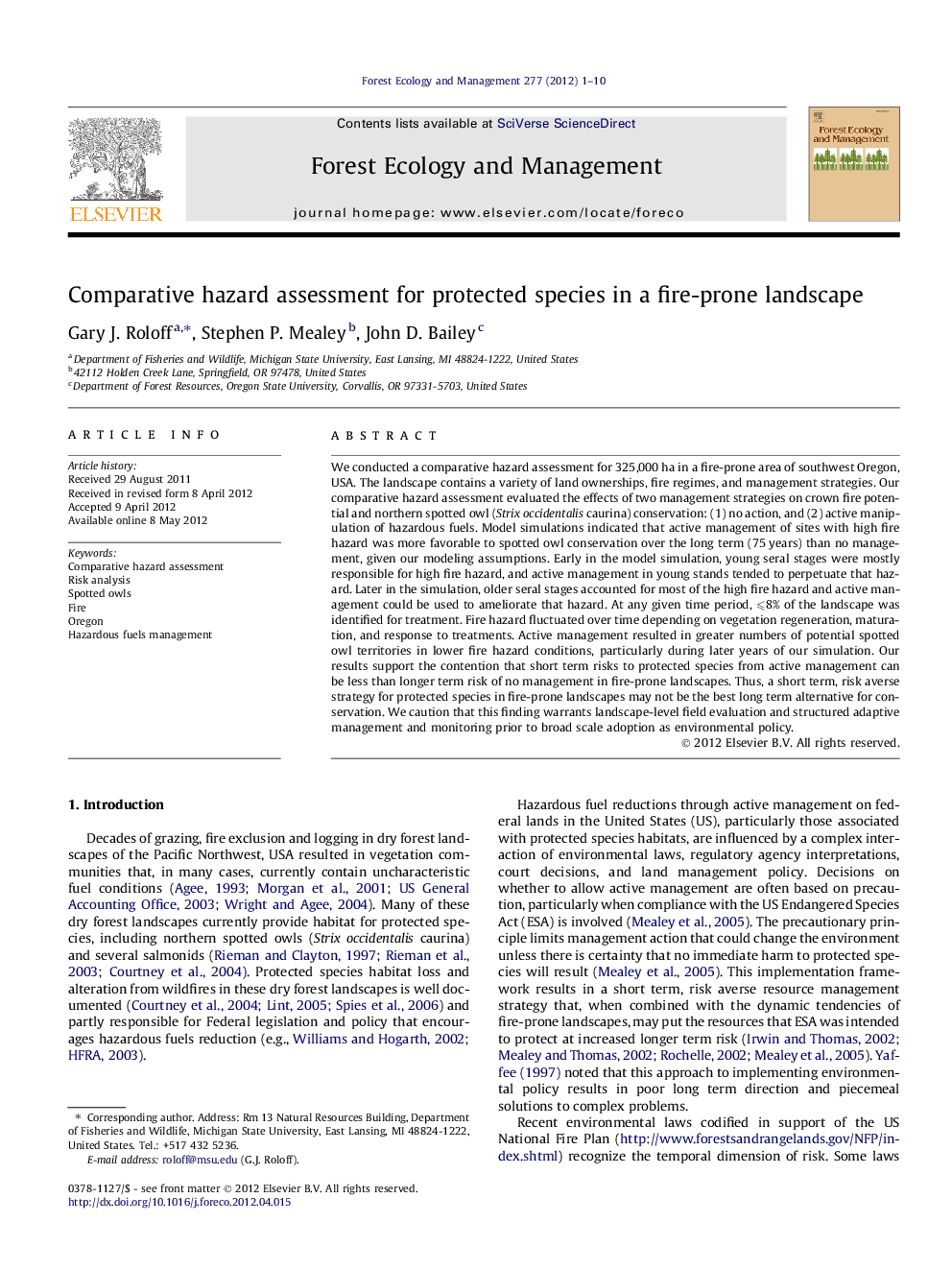| کد مقاله | کد نشریه | سال انتشار | مقاله انگلیسی | نسخه تمام متن |
|---|---|---|---|---|
| 87212 | 159239 | 2012 | 10 صفحه PDF | دانلود رایگان |

We conducted a comparative hazard assessment for 325,000 ha in a fire-prone area of southwest Oregon, USA. The landscape contains a variety of land ownerships, fire regimes, and management strategies. Our comparative hazard assessment evaluated the effects of two management strategies on crown fire potential and northern spotted owl (Strix occidentalis caurina) conservation: (1) no action, and (2) active manipulation of hazardous fuels. Model simulations indicated that active management of sites with high fire hazard was more favorable to spotted owl conservation over the long term (75 years) than no management, given our modeling assumptions. Early in the model simulation, young seral stages were mostly responsible for high fire hazard, and active management in young stands tended to perpetuate that hazard. Later in the simulation, older seral stages accounted for most of the high fire hazard and active management could be used to ameliorate that hazard. At any given time period, ⩽8% of the landscape was identified for treatment. Fire hazard fluctuated over time depending on vegetation regeneration, maturation, and response to treatments. Active management resulted in greater numbers of potential spotted owl territories in lower fire hazard conditions, particularly during later years of our simulation. Our results support the contention that short term risks to protected species from active management can be less than longer term risk of no management in fire-prone landscapes. Thus, a short term, risk averse strategy for protected species in fire-prone landscapes may not be the best long term alternative for conservation. We caution that this finding warrants landscape-level field evaluation and structured adaptive management and monitoring prior to broad scale adoption as environmental policy.
► Young forests were high fire hazard; active management perpetuated that hazard.
► Old forests were high fire hazard; active management ameliorated that hazard.
► More spotted owl territories in low fire hazard with active management.
► Short-term hazard from active management < longer-term hazard of no management.
Journal: Forest Ecology and Management - Volume 277, 1 August 2012, Pages 1–10